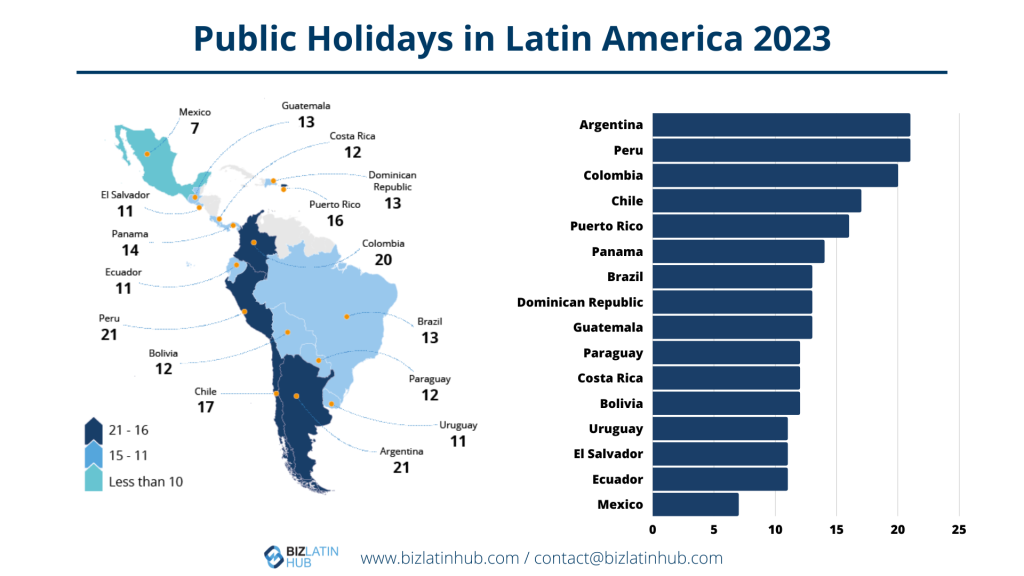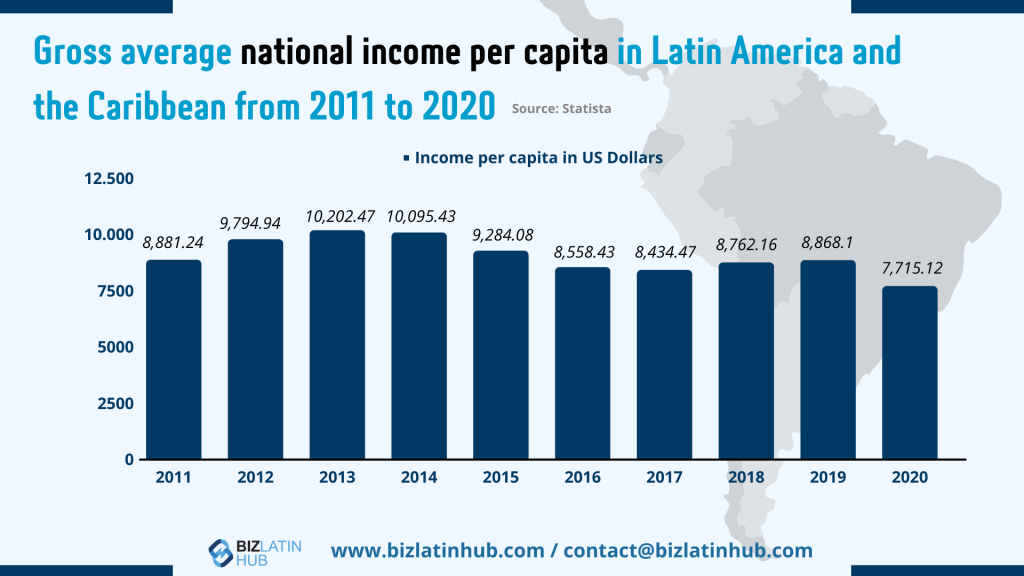Before 2000, there was little trade between Asia and Latin America. Nowadays, solid economic performance in both emerging economies creates a favorable outlook for trade between the two regions.
Due to complementary competencies and resources, support for interregional commercial relations has grown. Subsequently, trade and investment levels have accelerated, as both continents continue on their journey of economic growth. Latin America is an appropriate market for Asia’s competitively priced goods, services and technologies. Asia’s economic expansion requires large imports of raw materials and agricultural goods, in which Latin America is abundant.

Two Unlikely Partners
Asia and Latin America are separated by large physical distances, time zones, cultures and languages. Despite this, an increasing number of academic and cultural exchanges through institutions, tourism and media are helping to bridge the distance between these two diverse regions. Many elements are necessary to support deep-rooted and sustainable economic integration.
However, as many Latin and Asian economies look to lessen their dependence on the United States and China, inter-regional trade is a promising solution. Commercial relationships between Latin America and Asia are growing as trade continues to increase. Asia is now the second largest customer of Latin American exports.
Furthermore, investment is thriving between the two regions. Currently, the most prominent Asian countries in Latin America are China and Japan. We take a look at the current trading situation between the regions and what other Asian economies can offer to Latin American businesses and entrepreneurs.
Latin America’s Role in Asia
Asia imports commodities from Latin America(LatAm) such as oil, soybeans and ore (copper and iron). Such raw materials are scarce in Asia and therefore Latin American exports complement Asian mar. LatAm’s exports to Asia-Pacific countries grew by 18.7% year-on-year in the first three quarters in 2017. Key players in the Latin America’s relationship with Asia are Mexico and Brazil, naturally due to the size of their economies.
Trade agreements such as MERCOSUR and the Pacific Alliance have helped Latin America to harmonise its position on trade and grow its own regional economic cooperation in the region. The agreements have strengthened Latin America’s position to trade in the global economy and subsequently enter markets such as Asia.
Latin American Companies in Asia
- Bimbo (Mexican bakery goods): a multinational firm that is well vertically integrated. Bimbo has a production plant in Beijing and last year acquired a competing Chinese wholesale bakery company, further consolidating its presence in Asia.
- AJE (Peruvian carbonated beverages): competitive pricing costs and strategic marketings efforts have penetrated Asian markets and have factories in Indonesia.
- IMPSA (Argentinian energy solutions): major investments in Malaysia where they have production facilities that serve the Asian market. Positioned in the renewable energy business.
Many Latin American firms that have found success in Asia were already market leaders back home. Such expertise and financial backing helped their Asian expansion. At present, the region has a weaker hold on the Asian market than Asian firms have in Latin America. It’s important to note that Asia dwarfs Latin America in terms of population and GDP. That carries significant economic power in the commercial relationship.
However, as Asian middle-class populations grow, they demand diversified and differentiated goods to those offered to them currently. There is an opportunity for Latin America to serve that market demand.
Future Opportunities for Latin America in Asia
Opportunities for Latin America lie in renewable and sustainable energies. Currently, a large amount of Latin American trade depends on the exportation of petroleum gas and natural resources through mining. The focus needs to turn to renewables. In order to stay competitive, Latin America will do well by engaging in high-value business activities to fit Asian demand in the future. Given commodities such as petroleum won’t last forever, Latin America will benefit from providing new market offerings for export to its Asian trade partners.
Opportunities are also present in agricultural products for which Latin America has a comparative advantage. Other potential areas for growth exist in travel, transport and finance, which combine the expertise and comparative advantages of the regions.
What Does Asia Provide to Latin America?
Asia is a global leader in technology. As Asian markets become saturated, they look to expand their trade relationships abroad. Latin America has much lower levels of industrialization and is therefore set to benefit from importing such goods from Asia.
Currently, Latin America imports added-value intermediate goods and technological products, such as phones, computers and electronic parts from Asian countries. Asia has a comparative advantage in the production of manufactured products due to low labour costs, technological capital expertise and large pools of savings.
Asia’s own economic integration provides something of an inspiration to Latin America. The level of trade and investment within its own region has helped it to solidify its stance as a major trading global economy.
Asian Firms in Latin America
Latin America also receives a large amount of investment from Asian investors. Asian companies that have already invested in Latin America include:
- Viettel (Vietnamese telecommunications): Latin American subsidiaries generated net revenue of USD 72.5 million in the first nine months of 2018.
- Honda (Japanese automotive): manufacturing plants in Brazil, Argentina, Mexico with the Brazilian plant expanding productions to service the whole country by 2021.
- Hansoll Textile (Korean textiles production): operations in Guatemala and Nicaragua to guarantee speedy delivery to clients based in the United States.
Asian investors are already financing large scale infrastructure projects in Latin America, including canals, bridges, roads and airports. It’s clear that Asia has a growing dominant presence in the Latin American region.

Free Trade Agreements
As of 2017, there are 25 FTAs between the Asia-Pacific and Latin American region. By 2025 it is estimated there could be up to 36. Chile dominates FTAs with the Asia-Pacific. Taiwan and Singapore each have 4 FTAs with Latin American countries. FTAs are important to facilitate growth in trade between the two regions. The success of Chinese free trade agreements with Chile and Peru only further promotes this. Chile’s exports to China grew 43% year-on-year on average due to lowered trade costs. Such an impressive statistic cements the importance of free trade agreements in order to improve interregional economic integration.
- CPTPP: The CPTPP agreement is largely dominated by the Asian and Latin America regions (only three countries lie outside the two regions). Chile, Mexico, Peru, Brunei Japan, Malaysia, Singapore and Vietnam.
- MERCOSUR: The trading bloc that consists of Argentina, Brazil, Uruguay and Paraguay with other Latin American associate countries. MERCOSUR is looking to sign a FTA with Pakistan in 2019.
- ASEAN-Pacific Alliance: Pacific Alliance consists of Chile, Colombia, Mexico and Peru, with a specific focus on orientating trade towards the Pacific-Asian region, ASEAN.
- Country-specific agreements include Thailand-Peru, Indonesia-Chile, Panama-Taiwan and Central America-Korea. Proposed negotiations include Ecuador-India and Philippines-Mexico.
Trade in Services
The Asian service sector is growing faster than the world average. More specifically, Cambodia, India, Indonesia, Singapore and the Philippines have experienced the fastest growth of 12-18% annually in service exports. Latin America corporations can benefit from competitively priced offshoring services such as contact centers in countries like the Philippines and India. Such destinations are also attractive due to a large bilingual working population. Additionally, exporting products to Asian markets through key logistics hubs such as Singapore help businesses take advantage of its key competencies in transporting goods. To continue seizing opportunities in the services sector, it is important that FTAs are extensive and adequately cover the service sector.
Foreign Direct Investment (FDI)
Trade between Asia and Latin America encompasses more than just products and services. FDI encompasses the large amount of investment made between the two regions by a foreign party. Given FDI flows usually follow the establishment of a solid trading relationship of products and services, it is promising that significant FDI now takes place between Latin America and Asia. The creation of free trade agreements that reduce barriers to trade and protect investors suggests current growth will continue on a positive upwards trend. Again, Asia holds almost two-thirds of the combined FDI stocks in investments in Latin America.
Latin American investments in Asia are concentrated in China, Hong-Kong and India. As of 2017, 68 bilateral investment treaties have been signed between Asia-Pacific and Latin America. These bilateral agreements facilitate investment flows and secure investors. Such frameworks encourage investment.
Get help setting up in Latin America or Asia
Latin America has a world of potential business opportunities in Asia. The creation of more free trade agreements only further encourages the flow of goods, services and investment even more. Although there are still some barriers to trade, working with a firm such as Biz Latin Hub can get you towards success for your business.
We offer a range of back-office services including processing, due diligence, recruitment, market entry or company incorporation. Contact our business experts today and we’ll get back to you with a personalized strategy to help you maximize your investment.






